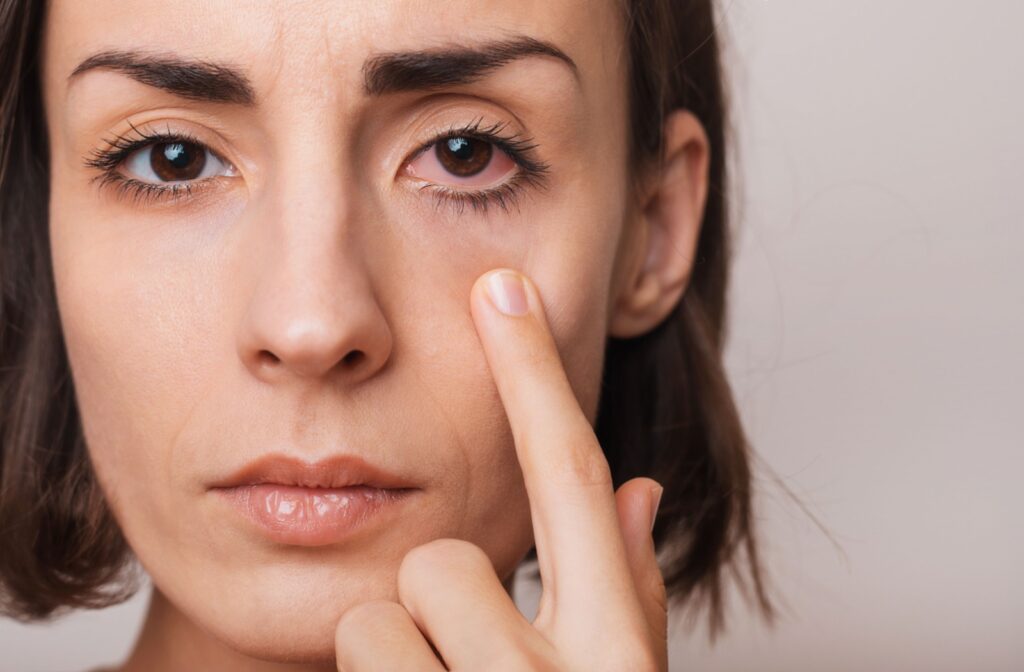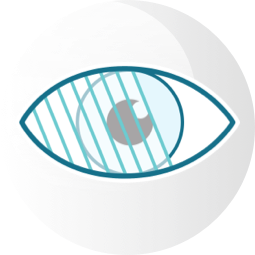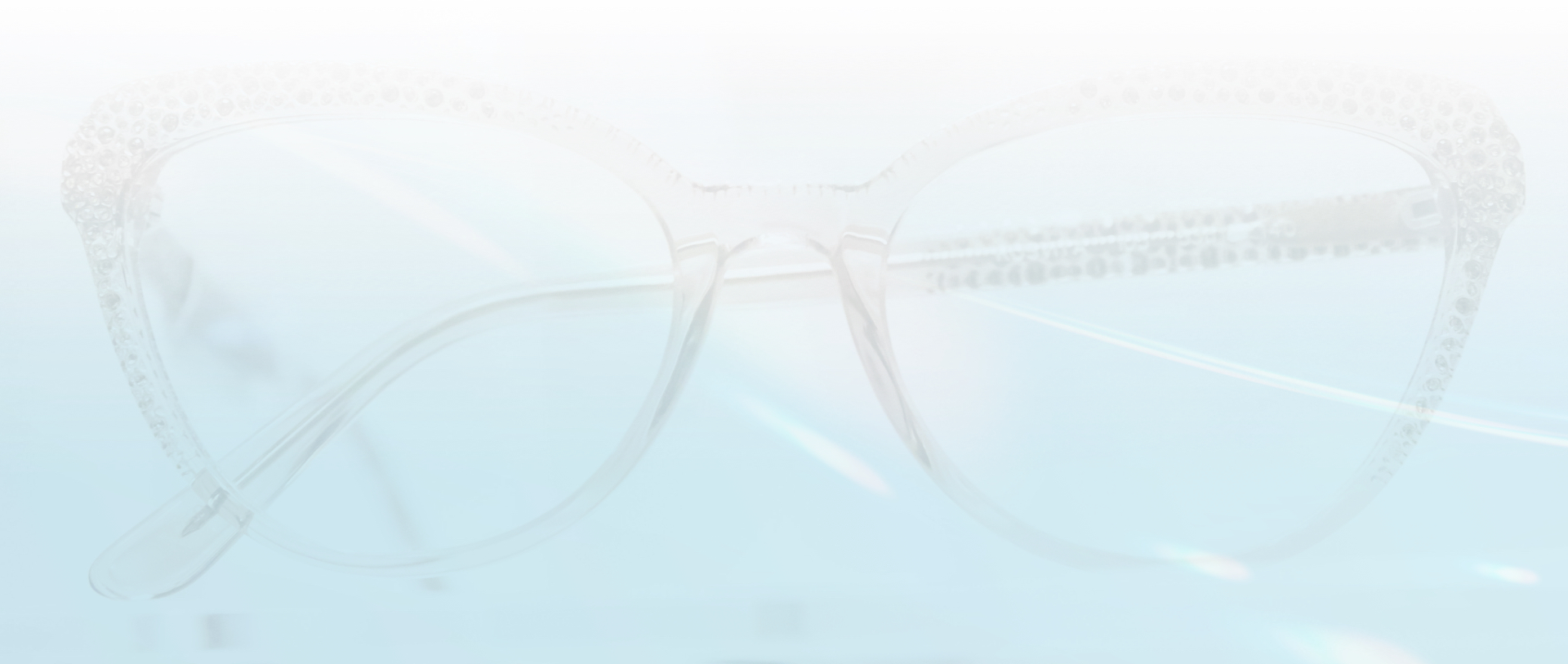Dry eyes are an increasingly common issue in our modern world. Whether it’s from long hours spent on digital screens, environmental factors, or underlying health conditions, dry eyes are more widespread than we often realize.
Although most cases of dry eyes won’t lead to blindness, untreated or chronic dry eyes can result in severe damage to your eyes and potential vision loss.
The Link Between Dry Eyes & Vision Loss
While uncommon, the long-term effects of neglecting dry eyes can significantly harm your vision. Below are several ways in which dry eyes, when untreated, can lead to severe complications:
Corneal Damage
The cornea is the eye’s transparent outer layer that plays a vital role in focusing light. Healthy tears keep the cornea moisturized, smooth, and free of irregularities. When there isn’t enough moisture, inflammation can occur, leading to scarring and tissue damage over time. This can impair the cornea’s natural function, resulting in blurred vision or, in rare cases, vision loss.
Increased Risk of Eye Infections
Tears not only hydrate the eye but also form a protective barrier that shields it against contaminants like bacteria and debris. Chronic dryness compromises this barrier, increasing the risk of infections such as keratitis. Left untreated, infections can cause ulcers or scarring that may lead to permanent vision damage.
Vision Impairments
Dry eyes can cause fluctuating or blurry vision that makes it difficult to see clearly. Without proper lubrication, the surface of the eye becomes irregular, distorting light entering the eye. This can result in discomforting symptoms such as sensitivity to light or even double vision, both of which can disrupt daily activities.
Underlying Conditions
Dry eyes might signal an underlying health condition, such as Sjögren’s syndrome, an autoimmune disorder that hampers tear and saliva production. If not treated, this condition can exacerbate eye dryness and in turn lead to vision complications, including the risk of blindness.
Discomfort with Contact Lenses
Contact lens wearers have a higher likelihood of developing dry eyes due to reduced oxygen flow to the corneal surface. Prolonged dryness while wearing contacts increases the risk of developing conditions such as corneal ulcers and infections, both of which require immediate medical attention to avoid long-lasting harm.
Preventing & Treating Dry Eyes
The good news is that there are several steps you can take to maintain healthy eyes and prevent complications associated with dryness. Being proactive can help you enjoy lasting comfort and clarity of vision. Here are our tips:
- Stay hydrated: Drinking plenty of water can help keep your entire body, including your eyes, hydrated. Aim for at least 8-10 glasses a day.
- Use artificial tears: Over-the-counter lubricating eye drops can replenish moisture on the eye’s surface, especially if you spend long hours in front of screens or in dry, air-conditioned environments.
- Blink often: Staring at a computer or phone screen can reduce how often you blink, which contributes to dryness. Make a habit of reminding yourself to blink more often, and follow the 20-20-20 rule: every 20 minutes, look away from your screen at an object 20 feet away for 20 seconds.
- Take breaks: If your work requires prolonged screen time, schedule regular breaks to rest your eyes. Along with blinking, consider using artificial tears during these breaks to maintain moisture levels.
- Protect your eyes: Wearing sunglasses outdoors can protect your eyes from drying winds and UV rays. Look for wraparound sunglasses with adequate coverage.
- Seek professional treatment: If you experience chronic dryness or discomfort, consult an eye care professional who can diagnose the underlying causes and recommend a treatment plan tailored to your needs.
Timely intervention not only alleviates symptoms but also helps prevent potential complications in the future.
Professional Treatment Options for Chronic Dry Eyes
For those experiencing persistent dryness, professional treatments offer effective solutions that go beyond home remedies. Below are some advanced options for managing and treating chronic dry eyes:
OptiLight IPL (Intense Pulsed Light)
This quick, non-invasive procedure uses precise light pulses to target the meibomian glands in your eyelids. These glands play a crucial role in producing the oil layer of your tears. By reducing inflammation and improving tear quality, OptiLight IPL can alleviate symptoms of dry eye disease over time.
Prescribed & Over-the-Counter Drops
Prescription eye drops like RESTASIS or Xiidra are formulated to reduce inflammation and improve tear production in cases of persistent dryness. For added hydration, preservative-free artificial tears can be used regularly to maintain moisture.
Punctual Plugs
Punctal plugs are tiny, biocompatible devices that help keep your eyes hydrated by blocking the tear ducts where tears usually drain away. Your eye care professional can quickly and easily insert them into your lower or upper tear ducts during a simple, minimally invasive procedure. Depending on what you need, they can be temporary and dissolve on their own, or permanent, only needing removal if necessary.
Protect Your Vision, One Blink at a Time!
Dry eyes may seem like a minor irritation, but they can have significant consequences if ignored. By understanding their potential complications and taking timely preventative measures, you can safeguard your eye health for years to come.
If dry eyes are disrupting your day-to-day life, don’t wait for the symptoms to worsen. Book an appointment with McCauley Celin Eyecare Associates’s knowledgeable team today, and we’ll help you find relief with treatment options tailored to your needs. Your eyes deserve the best care!














